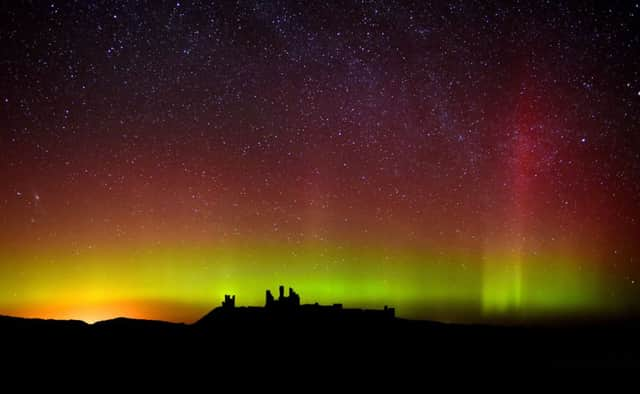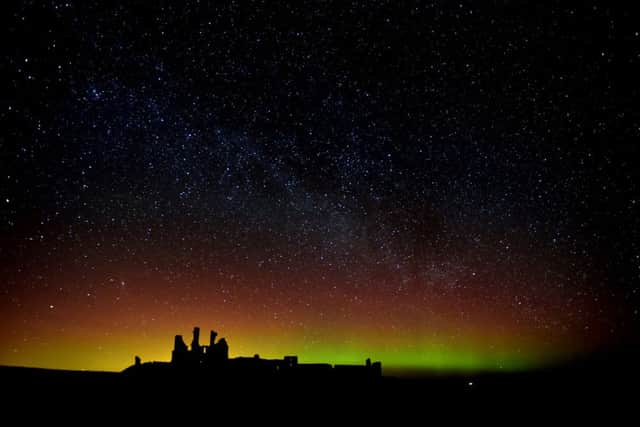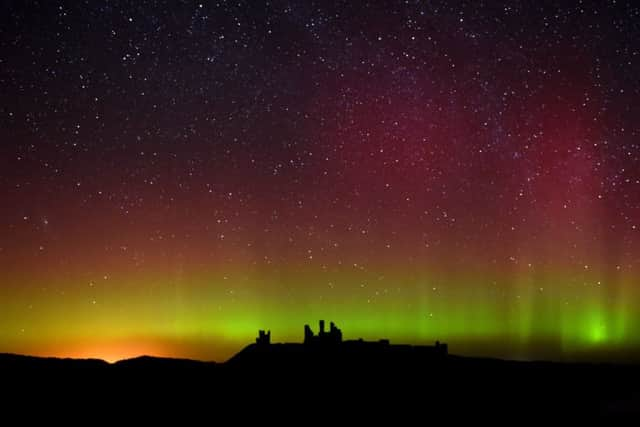‘Best view for years’ of spectacular Northern Lights


Sky gazers in Northumberland witnessed the “best aurora display in years” as the Northern Lights put on a thrilling spectacle in the early hours of Tuesday morning.
And while it may have been too cloudy to get a good view of the show in Yorkshire, astronomers here say there is plenty to gaze upwards for.
Advertisement
Hide AdAdvertisement
Hide AdMartin Lunn, a former curator of astronomy at the Yorkshire Museum and a fellow of the Royal Astronomy Society, said right now is the best time to see Jupiter, as it sits high and bright in the sky, just to the left of the constellation Orion.


“It is a really white, bright dot in the sky - you would be hard put to miss it. If you have binoculars, look at Jupiter and you can clearly see the four moons, discovered by Galileo in 1610”, he said. “But you don’t need telescopes, just put on a warm coat, a woolly hat, and go out into your garden and have a look for a few minutes.
“You’ll be amazed at what you can see. “And if you’re very lucky, you might see a shooting star or meteorite.”
If you’re looking at getting into astronomy, this week is a good time to start, according to Andy Exton, secretary of Scarborough and Ryedale Astronomical Society, which runs an observatory at Dalby Forest.
Advertisement
Hide AdAdvertisement
Hide AdOn Friday, just after sunset, brings the opportunity to see “something special,” he said, as a thin crescent moon will be seen alongside a very bright Venus, and what might appear to be a bright orange star, but is in fact the planet Mars.


South Yorkshire amateur astrology Richard Darn agreed - and said with the added bonus of Jupiter, Friday would be the perfect chance for novices to “bag your first three planets.”
He also said stargazers shouldn’t give up on spotting an aurora in Yorkshire.
“One of the great things about the Northern Lights is that they are so unpredictable,” he said. “We have some very dark skies over the North York Moors - you just have to be patient. I was lucky enough to see a display in Barnsley in 2003, it was so intense it could even be seen over an industrial town.
Advertisement
Hide AdAdvertisement
Hide Ad“There are resources out there on the web that can alert you of a chance to spot it, but you can’t be quite sure when the sun is going to sneeze.”
The natural phenomenon is caused by charged particles colliding in the Earth’s atmosphere and is seen above the magnetic poles of the northern and southern hemisphere.
Before a display, electrons and protons are hurled from the sun’s atmosphere - Mr Darn’s “sneeze” - and are blown towards the Earth by the solar wind.
Usually the best spots to see the lights are those close to the North Pole, such as Iceland and Norway, but as these photographs, taken by aurora-chaser Owen Humphreys at Dunstanburgh Castle, on the Northumberland coast, show, skygazers in Britain can sometimes see wonderful displays right above their heads.
Advertisement
Hide AdAdvertisement
Hide AdMr Exton was lucky enough to see Northern Lights above Ravenscar and Scarborough in February last year.
“You don’t have to got to Iceland to see it,” he said. “But the further north you go, the greater it gets. In Scotland, you can have displays several times a week.”
Astronomers have been heading to the Tan Hill Inn in the Yorkshire Dales National Park to gaze up to the stars for years - including this week. Two and a half miles from the nearest building, and famous for being the highest inn in Britain, it is designated as a Dark Sky Discovery Site and during clear skies, all of the major constellations can be seen and the Milky Way is visible to the naked eye.
Barman Chris Walker said: “There is no light pollution whatsoever, so you can see for miles around - and, of course, straight up.”
Advertisement
Hide AdAdvertisement
Hide AdFor those wishing to take a keener interest in the stars, Mr Lunn recommends contacting your local astronomy society.
“Winter is a very good time to look up,” he added.
Count is on to solar eclipse
On the website of the Scarborough and Rydeale Astronomical Society, a clock counts down the days, hours, minutes and seconds to a very exciting event.
In 29 days, on the morning of Friday March 20, the skies will go dark as a partial solar eclipse sees 90 per cent of the sun obscured the full moon.
The last major solar eclipse visible in Scarborough was in May 2003 - and it will be a long wait for those who miss this event.
Advertisement
Hide AdAdvertisement
Hide AdSecretary Andy Exton said: “We won’t have an eclipse of that magnitude until 2026 - it’s a rare event.”
The society is also counting down to the transition of Mercury, where the planet will pass in front of the sun. But skygazers will have to wait a little longer for that - 445 days.